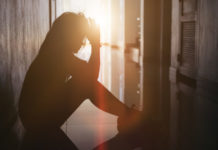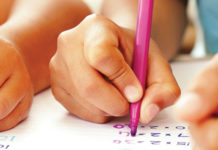
It has been described as the best meditation by the Dalai Lama, heaven on earth by poet Edward Lucas, and the bridge between despair and hope by entrepreneur E. Joseph Cossman: sleep is something most people crave and few get enough of.
Sleep needs a cred boost
It’s as essential to our very survival as water, food, and shelter, yet sleep tends to be pushed aside when it comes to priorities, considered an afterthought or even an inconvenience amid our busy schedules. That sleep ranks so low in terms of healthy lifestyle habits is a phenomenon that can have serious effects on our well-being.
“At the end of the day, we’re not valuing sleep,” says Dr. Charles Samuels, medical director of Calgary’s Centre for Sleep & Human Performance. “Most of the problem comes from people not understanding the health benefits of normal sleep.”
Lack of sleep and poor sleep are two distinct issues. In North America, 20 to 30 percent of the population has a sleep debt averaging approximately 10 hours. They are normal sleepers who lack sufficient shut-eye. Others have a sleep disorder—such as insomnia or obstructive sleep apnea (snoring)—that disrupts their nighttime rest.
Sleep debt comes with high costs
Both come to the same end point: cognitive, behavioural, and physical impairment, and a higher likelihood of developing chronic illness.
“When you either have not enough sleep or poor quality sleep, you end up with cognitive impairment; your ability to think, your memory, and your concentration are impaired,” Samuels says.
“Classic signs of behavioural impairment are irritability, sleepiness, and fatigue. Classic examples of physical impairments would be increased appetite for calorie-dense food, leading to obesity or problems with weight control.
“As you accumulate sleep debt or have a sleep disturbance, you’re at higher risk of cardiovascular disease, metabolic disease, and diabetes,” he says. “There’s a higher risk of mood disorders. Anxiety is exacerbated.”
Blissful, sufficient sleep doesn’t have to be the stuff of dreams, however.
Children
Developing sound sleep habits starts early in life. Little ones need to learn to self-soothe so they can fall asleep and stay asleep on their own.
As they grow, kids need different amounts of sleep
| infants (4 to 12 months) | 12 to 16 hours per 24 hours |
| toddlers (1 to 2 years) | 11 to 14 hours per 24 hours |
| preschool (3 to 5 years) | 10 or 11 hours per 24 hours |
| children (6 to 12 years) | 9 to 12 hours per 24 hours |
| teenagers (13 to 18 years) | 8 to 10 hours per 24 hours |
Note: Amount of required sleep in a 24-hour time span includes naps and varies among individuals.
Approximately 30 percent of kids have sleep problems.
Sleep-onset association disorder
Common in young children, sleep-onset association disorder is characterized by a child needing certain conditions from a caregiver to fall asleep, such as being rocked or having their back rubbed.
Delayed sleep phase syndrome
Older kids and teenagers commonly experience this sleep problem marked by going to bed very late and waking up late. Being a night owl can negatively affect daytime responsibilities. “Delayed sleep phase syndrome is often misinterpreted as insomnia,” Samuels says, referring to the condition involving dissatisfaction with sleep quality or duration.
Sleep disturbances in teens can be associated with mental illness, such as anxiety and depression.
Developing healthy sleep habits
Quiet darkness
To help develop lifelong healthy sleep habits, it’s crucial that a child’s brain recognizes nighttime, with a bedroom that’s quiet and dark. That same sleep-inducing environment is vital for teens as well.
Technology-free space
Kids (like adults) need a technology-free zone for good quality sleep. That means not having a computer, mobile phone, tablet, gaming console, or other electronic devices in their room. Technology stimulates brain activity, making it harder to fall asleep, and electronic devices emit bright light that interferes with sleep.
Consistent sleep/wake times
Bedtime and waking time should be similar every day and not vary by more than 30 minutes between weekdays and weekends.

Adults
Adults typically sleep seven and a half or eight hours a night, on average, but that can range between six and nine hours.
Healthy young adults take 10 to 20 minutes to fall asleep on average, and many adults enjoy consistent sleep: they go to bed at regular times, fall asleep quickly, and experience little wakefulness.
About 32 percent of adults have sleep problems.
Insomnia
Work demands, especially in conjunction with parenting and caring for aging parents, financial strain, and substance use are just some of the things that can get in the way of sufficient sound sleep. “With adults, insomnia is associated with stress and lifestyle habits or with mental illness,” Samuels says.
Sleep apnea
The most common sleep disorder affecting adults is obstructive sleep apnea, where breathing stops and starts. There are a number of possible causes, including obesity, hormone issues, and large tonsils.
Developing healthy sleep habits
Give it priority
Adults can improve their sleep by making it a priority, deeming it as important as exercise and diet when it comes to healthy living.
Avoid before bedtime
- caffeine
- nicotine
- alcohol
- heavy meals
Create a sleep sanctuary
- Reserve your bedroom for sleep and intimacy.
- Keep your bedroom cool and dark.
- Skip the screens.
Seniors
Our sleep changes as we age. Older adults tend to go to bed earlier than younger adults, may sleep more during the day, and might experience more nighttime awakenings.
Aging can also introduce all sorts of sleep-disrupting factors. Sleep apnea is common; so are repetitive limb movements. That’s not all.
About a third of seniors have sleep problems.
“In the elderly, chronic pain, congestive heart failure, chronic obstructive pulmonary disorder, and other medical illnesses can disturb sleep,” Samuels says. He notes that certain medicines can have detrimental effects. It’s important for people to talk to their health care practitioner about the effects of drugs on their sleep. Turning to sleeping pills isn’t the answer.
“People seeking medication in any form means they have a clinical, significant sleep disturbance, and that should be discussed with their primary care physician,” Samuels says.
“We do not promote over-the-counter medication for sleep. At the Centre for Sleep, we have a very strong behavioural sleep medicine program. There’s an array of interventions based on the principles of cognitive behavioural therapy, but it goes beyond that into relaxation techniques, exercise, diet, and more.”
Developing healthy sleep habits
Older people can improve their sleep by adopting regular sleep/wake cycles, being physically active, and diminishing worry as much as possible before bedtime.
Sleep disorders through the ages
Children
Sleep-onset association disorder
What it looks like:
Common in young kids, this occurs when a child needs to have their caregiver do certain things to help them fall asleep, whether it’s being fed, rocked, or having someone lie down next to them. When they wake up in the middle of the night, they can’t get back to sleep without those same activities.
How to fix it:
To overcome this problem, kids need to learn how to soothe themselves to sleep. It helps to have a bedtime routine, such as a warm bath followed by reading alone in bed.
Delayed sleep phase syndrome
What it looks like:
Although this can occur at any age, teens are particularly prone to becoming “night owls,” developing a routine of going to bed late, sleeping in, and skipping breakfast.
How to fix it:
It’s important for teenagers to go to bed at roughly the same time every night and wake up around the same time daily. Also important is to avoid caffeine and other stimulants during the evening.
Insomnia
What it looks like:
Insomnia can strike people of all ages, including children. It involves trouble falling asleep, waking up throughout the night, or waking too early. It becomes a clinical problem when people experience difficulty falling or staying asleep several nights per week, leading to mood disturbances, concentration problems, and overall fatigue.
How to fix it:
Relaxation techniques can help; so can going to bed only when you feel sleepy, exercising regularly (but not right before bed), and taking at least one hour to unwind before going to bed, whether it’s listening to music, reading, or writing down worries and setting them aside for the evening.
Adults
Obstructive sleep apnea
What it looks like:
This condition involves intermittent cessation of breathing during sleep. Severe cases can raise the risk of heart disease, stroke, and diabetes. Sleep apnea can be caused by obesity or being overweight, while drinking alcohol and smoking can also increase the risk.
How to fix it:
Along with healthy lifestyle changes, someone diagnosed with obstructive sleep apnea can use continuous positive airway pressure (CPAP), which consists of a portable machine that delivers pressurized air to the nose through a mask.
Seniors
Periodic limb movement disorder
What it looks like:
This phrase describes repetitive, uncontrollable movements of the arms and legs during sleep that may cause “microarousals.” There may be a genetic link or other issues, such as iron deficiency or nerve or blood circulation problems.
How to fix it:
If iron deficiency is detected, supplementation may be suggested; in other cases, regular exercise can help alleviate symptoms.
Restless legs syndrome
What it looks like:
Uncomfortable or unpleasant sensations in the legs when lying down lead to an overwhelming urge to move the legs during rest, affecting the ability to sleep.
How to fix it:
Warm baths, leg massages, and applying hot and cold packs can help. Making sure you’re getting enough magnesium (food sources include leafy green vegetables, wheat germ, pumpkin seeds, and almonds) may also help alleviate the symptoms.
Herbs and supplements to help you sleep
| melatonin | Melatonin is a hormone secreted by the pineal gland that helps the body regulate its sleep/wake cycle. It can be helpful for insomnia, delayed sleep phase disorder, and trouble sleeping caused by shift work. |
| magnesium | An essential mineral, magnesium can help address insomnia. It has also been shown to help diminish stress, which can interfere with sleep. It may also minimize the effects of restless leg syndrome. |
| valerian root | This herb, which is native to Europe and parts of Asia, is commonly used for treating insomnia, reducing the time it takes to fall asleep and improving sleep quality. |
| lavender | Research has shown that lavender essential oil, diffused for aromatherapy, may help increase slow-wave sleep, the very deep sleep during which your muscles relax and your heartbeat slows right down. |
| passion flower | Also known as apricot vine, this climbing vine may help improve sleep quality and help people with insomnia. |
| theanine | An amino acid found in tea leaves, theanine works through anxiolysis (reduction of anxiety) to promote relaxation without sedation and helps you fall asleep more quickly/easily and sleep more soundly. |
| glycine | An amino acid and neurotransmitter, glycine is found in high-protein foods (meat/fish, dairy, legumes) or as supplements that may improve quality of sleep and help improve daytime performance after occasional sleep restrictions. |
The single most important tip for getting good sleep
Dr. Charles Samuels, former president of the Canadian Sleep Society, has this to say to people of all ages who have trouble sleeping: “Get off your phone.”
“The number-one issue affecting people’s sleep is technology. People need to learn about the negative effects of technology on health and sleep and limit their exposure. It’s becoming a serious problem.”
Even if you’re not using your phone in bed, it can detract from sleep with alerts, sounds, vibration, and light.
Tech to measure sleep
Polysomnography
When it comes to the measurement of sleep, supervised polysomnography (PSG) is widely considered the gold standard. PSG typically involves an eight-hour monitoring of someone sleeping through audio and visual recording with electrodes in varying positions, as well as assessment of breathing and leg movements. This is usually done in a controlled setting such as a sleep clinic or hospital.
PSG has been around for more than five decades, but other approaches have been introduced to measure sleep.
Actigraphy
Said to diagnose circadian rhythm disorders via a device worn on the wrist, actigraphy can measure sleep over extended periods of time in the patient’s natural sleep environment.
2B‐Alert App
A more recent innovation is the 2B‐Alert App. The first mobile application that progressively tracks a person’s response to sleep deprivation in real time, it generates individualized predictions of alertness.
Multi‐sensor activity trackers
Also called fitness trackers, devices such as the Fitbit Alta HR are used to quantify sleep duration and REM sleep.
How effective are they?
The effectiveness of new technology on accurately measuring sleep—and our understanding of it—has yet to be determined.
With the potential for variability in results among different technologies, there’s concern among some experts that the routine application of data from such devices in clinical practice could introduce significant diagnostic error, according to the Journal of Sleep Research
Dieter Riemann, the journal’s editor-in-chief, is calling for ever more comprehensive ways to study sleep.
“I think what we really need in the sleep field is to overcome the artificial situation of the sleep laboratory and furthermore move to consecutive unobtrusive measurements over periods of seven to 14 days,” Riemann wrote in a March 2020 article. “Such data could really alter our perception of sleep disorders and sleep itself.”




































